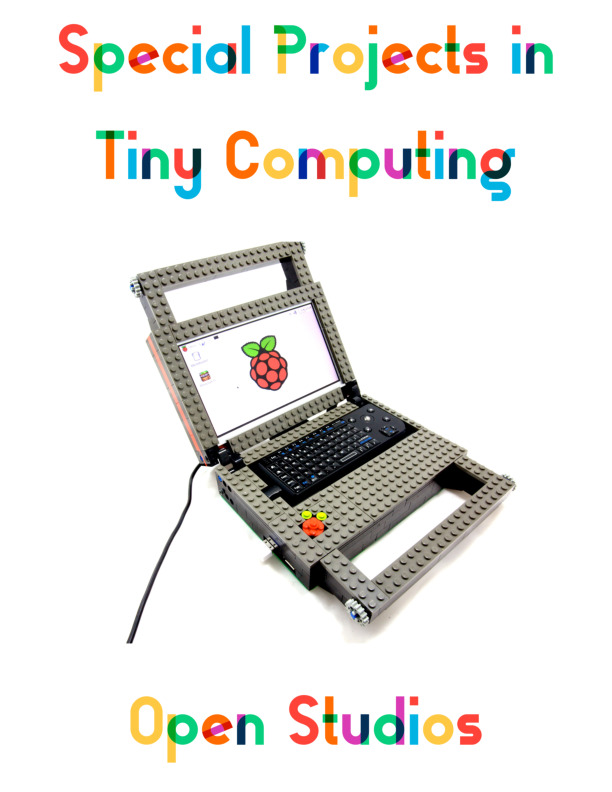Beyond Personal Computing
This week:
- what have we learned?
- documentation!
- evaluations
- open studios tomorrow!
Open Studio Thursday

What have we learned?
Let’s look back at our Goals of the course
At the beginning of the semester we laid out the goals of this course:
Students create custom projects using inexpensive, bank card–sized computers for art installations and works for the public good. Students will conceptualize, design and implement new computer-based devices and participate in critique of contemporary technology and networked devices. In the process, their knowledge of text-based interfaces, free culture, collaboration, circuit building, and the history of creative computing/hacking is deepened.–from the syllabus!
Here’s an overview of what we’ve done:
- What we mean by the term tiny computing
- a brief history of computing and the hardware/software stack
- The physical hardware that make up a basic computer
- overview of hacking culture, free culture and the free/libre and open source software communities
- What Linux is and where it came from
- Installing and working with the GNU/Linux operating system
- Raspberry Pi and single board computers and how to set them up
- Using the command line to control, customize, automate your computer
- Remotely connecting securely to a computer
- Using and experimenting with software to work with hardware and sensors
- a broad overview of 3d fabrication technology including laser cutting and 3d printing
- ethical issues relating to computing, hardware projects and post-colonial computing
- creating our own private networks with Piratebox
- an introduction to Bash shell and language, and the Python programming language
- overview of artist projects using Raspberry Pi and the conceptual, social and technical underpinnings of their works
Documentation
Your final project is due next week. A completed project includes:
- Video of you demonstrating your project. Shoot for between about a minute and no more than 3 minutes total. Show the entirety of the project, explain the concept and show how to use it. Make the documentation compelling and well-made!
- a completed project, placed online in Moodle. I will then be able to place these on our tiny computing website. Please write in plain text, html, markdown but not a pdf.
- title of project
- group members
- 1 - 2 paragraph well-written conceptual description
- A detailed step-by-step project building tutorial
- what parts/hardware are needed/used
- What software is needed used (and where to get it)
- a numbered procedure to be able to reproduce the project. Ideally with photos/screenshots of steps along the way.
- all code posted online (ideally in a github repo.)
- project manual (how to use it) - This should be written in the clearest possible detailed manner. For example, you may want to have a diagram of buttons on your device, or a manual for how to change some aspect of the software.
- Also attach your logs of your activity and weekly photo documentation